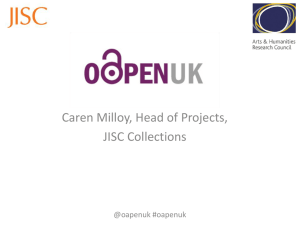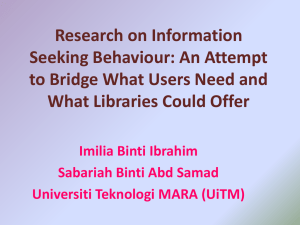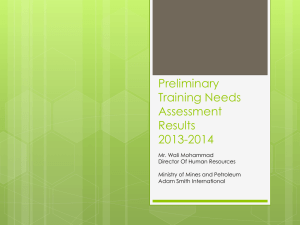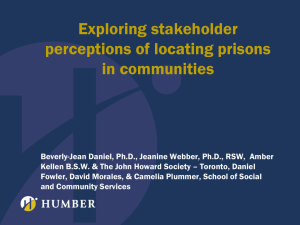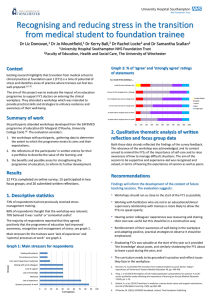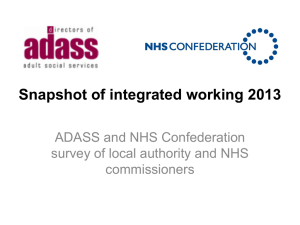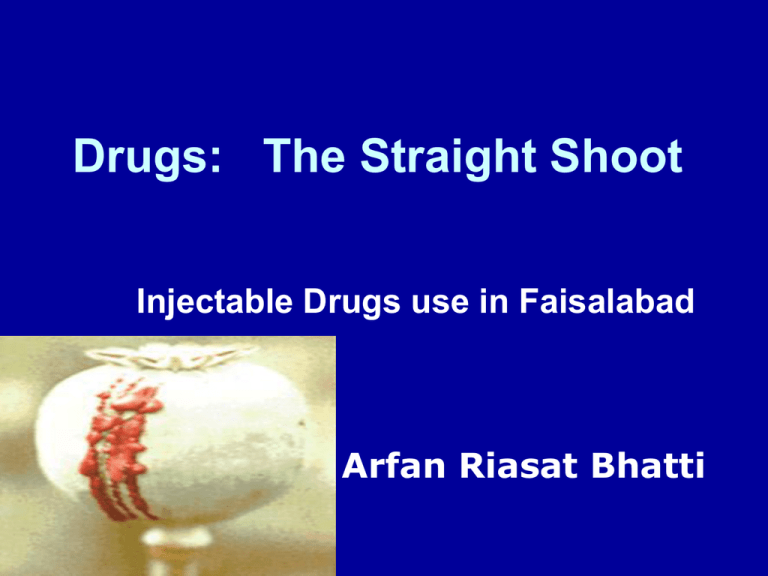
Drugs: The Straight Shoot
Injectable Drugs use in Faisalabad
Arfan Riasat Bhatti
Drug addiction, a festering menace is not only
injurious to individual but also imperils the health
of the entire social fabric with the fast cascading
impacts. Drug addiction has two components:
physical dependency, psychological dependency.
Physical dependency occurs when a drug has
been used habitually and the body has become
accustomed to its effects. The person must
continue to use the drug in order to feel normal,
or its absence will trigger the symptoms of
withdrawal. Psychological dependency occurs
when a drug has been used habitually and the
mind has become emotionally reliant on its
effects, either to elicit pleasure or relive pain, and
does not feel capable of functioning without it.
It has been observed that the following two drugs
are largely used in Pakistan: heroin and
hashish. Heroin addicts have penetrated all
social classes and are now all pervasive. The
country has drug dens-places where people
smoke hashish, heroin other drugs. Almost all
sections of the society have fallen victims to
this evil. The educated classes, which
perceived to be aware of the ill effects of the
drugs is worst affected 60 percent of the total
addicts in the country are literate and
employed. According to gender classification
almost 90 percent of drug addicts are male
whereas 10 percent comprises of the female
Currently injecting drug use is not the most common
method of drug-use in Pakistan; however the usage of
this method is on the rise. Though the reported
prevalence of drag users varies in different areas and as
reported in small and large scale studies, The mean age
of drug users as reported is 31-33 years and although
female users do exist, users are predominately found to
be male. Coupled with the idea that drug users feel
injectable drugs are 'easier to use,' the relative ease of
acquiring injectable drugs proves to be a barrier towards
harm-reduction efforts. Even if 'powder' (heroine) was
unavailable or too expensive, psychotropic drugs are
readily available at most pharmacies
The study was planed with the objective to
determine causes of injectable drugs use.
District Faisalabad was selected for this study
and four towns was selected randomly. A
sampling of 200 respondents was selected
through convenient sampling methods from
District Faisalabad. First of all IDU's (injectable
drug users ) identified spots, hospitals private
clinics and red-light areas visited from each
town So, those fifty respondents were
interviewed from each town for this study.
Distribution of the respondents according to their age.
The average life of the population in Pakistan was 64.13 years therefore were
divided into three different age groups. The regarding the age of respondents
are presented.
Age Group
Frequency
Percent
Under 25 (Years)
70
35.0
26-45 (Years)
120
60.0
46 and above (Years)
10
5.0
Total
200
100.0
Table reveals that 35.0 percent of the respondents were belonging to the
age group of young people, 60.0 percent of the respondents were middle
aged persons and 5.0 percent of the respondents were belong to the old
aged persons.
Distribution of the respondents according to their sex.
Sex
Frequency
Percent
Male
180
90.0
Female
20
10.0
Total
200
100.0
Table indicates that 90.0 percent of the respondents were male and 10.0 percent of
the respondents were female.
Distribution of the respondents according to their occupation.
Occupation
Frequency
Percent
Unemployment
40
20.0
Labour
60
30.0
Job
25
12.5
Begging
35
17.5
Sex worker
10
5.0
Garbage collector
30
15.0
Total
200
100.0
Table indicates that 20.0 percent of the respondents were unemployed, 30.0
percent of the respondents were labours, 12.5 percent of the respondents
were doing jobs, 17.5 percent of the respondents were involve in begging,
5.0 percent of the respondents were sex worker and 15.0 percent of the
respondents were earning through collecting garbage.
Distribution of the respondents according to their responsible for
addiction.
Responsible
Frequency
Percent
Themselves
15
7.5
Family members
15
7.5
Friends
40
20.0
Bad company
45
22.5
Failure in life
50
25.0
Mental satisfaction
15
7.5
Unemployment
15
7.5
As a fashion
5
2.5
Total
200
100.0
Table indicates that 7.5 percent of the respondents their families were
responsible, 20.0 percent their friends were responsible, 22.5 percent got
addiction by their bad company, 25.0 percent of the respondents their
failure in life was reason, 7.5 percent addict just for mental satisfaction, 7.5
percent got this addiction because they were unemployed and 2.5 percent
of the respondents had started addiction as a fashion.
Distribution of the respondents according to their reason of starting
injectable drug in place of non injectable drug.
Reason
Yes
Percentage
No
Percentage
Total
Percentage
Low cost
65
32.5
135
67.5
200
100.0
Easy
availability
35
17.5
165
82.5
200
100.0
Prompt
action
85
42.5
115
57.5
200
100.0
Non
availability of
other drug
15
7.5
185
92.5
200
100.0
Table shows that there are many reason of using injectable drugs and one
respondent use injectable drug due to more than one reason out of 200
respondents 32.5 percent use due to low cost, out of 200 respondents 17.5
percent used due to easy availability, out of 200 respondents 42.5 percent
used because of prompt action and out of 200 respondents 7.5 percent use
due to non availability of other drugs.
A vast majority of new addicts belong to younger
generation who are hooked on narcotics through their
friends, casual acquaintances, drug pushers and
sometimes, family members. No single factor can predict
whether or not a person will become addicted to drugs.
Risk for addiction is influenced by a person's biology,
social environment, and age or stage of developmen
Drugs are quite cheap and most of the people injecting
drugs are laborers who have a low or no educational
background. Chronic drug users are common and have
expressed high motivation for drug treatment, in
particular access to detoxification. Inability to access
generic health care services has led to poor health
conditions (wounds and abscesses). Females and
children using drugs are also present in Pakistan who
injects drugs daily
Pakistan no longer has a 'window of opportunity' to act in
advance in order to prevent the transmission of
HIV/AIDS among people injecting drugs. We can no
longer deny we must at least act now in order to
minimize further damage. Like most Asian countries, in
Pakistan people injecting drugs are highly stigmatized
and criminalized. Considering that approximately 50% of
the people injecting drugs are currently married and
sexually active, secondary transmissions due to unprotected sex to their spouses or casual sex partners
(mostly female sex workers), is inevitable. Young people
are the future of a Nation. A significant proportion of
people injecting drugs is young people between 18-24
years of age. Early HIV infections due to injecting and
sharing of syringes will result in large number of young
persons infected resulting in loss of human resource and
additional burden of disease on an already
overburdened health and social care system.
Change of drug abuse Pattern with time (4)
Characteristic of drug
use
Traditional
Premodern
Modern
Number of drugs
+
++
++++
Potency
+
++
+
++
++++
_
Linkage to social and
religious settings
Social management of use
+++++
Mode of administration
+
Tolerance of deviance
Low
Extent of drug problem
+
Frequency of use
+++
+
+
Low
_
+++++
High
+
+++
+
++++
Some areas that affect drug
abuse system with examples
•
•
•
•
•
•
•
•
•
•
Biological
Psychological
Medical/ psychiatric
Educational
Socio-cultural, moral
Economic
Geographic
Historical
Political
Anthropological
•
•
•
•
•
•
•
•
•
•
Genetic predisposition, Brain function
Personality trait, Childhood experiences
Co-morbidity, Self treatment
School system, media
Religion, Stigma and social inhibition
Drug dealers, poverty, Money laundering
Bordering producing countries
Tradition, wars, occupation
Using drugs as means of control
Acceptance, ritualistic use
Some levels of drug abuse as a
system and response to them
•
•
•
•
•
•
•
Biological/ Medical
Family
Schools and education
Religious beliefs
Youth
Economic issues
Demand, Supply,
Harm
•
•
•
•
Early treatment of depression
Parental training
Life skills training
Liaison, training, joint
planning
• Recreation, Life Skills
education
• Employment, helping farmers
• Comprehensive planning for
prevention, treatment and
rehabilitation, harm reduction
CONCLUSION
• It has been concluded that there is a great increase in use of
injectable drugs in place of non injectable drugs. All most all
injectable drug users are those persons who use non injectable
drugs before this. The injectable drugs are easily available on
medical stores and other places but the non injectable drugs are not
easily available. The expense on injectable drugs is low as
compared to non injectable drugs. The drug users use a syringe
more then one time this practice is very dangerous. The drug users
use drug in groups and if one person in a group is infected with a
transmitted disease then all the group become infected with this
disease. Majority of the respondents shift from non to injectable
drugs from two years and according to them the reason of becoming
addict is their friends and bad company.
• It has been concluded that majority of the respondents belong to
poor families and there income is very low and education of the
majority is also very low. That is why the financial problems become
the reason for addiction.
• Government should made efforts to control this very serious and
harmful problem which is becoming a cancer for new generation. In
the age of school and college the young generation become addict
and become a burden for there parents and also for country.
Government should control on those factors which make it business.
Rehabilitation
• is a long process which,
• can hardly be achieved through classical institutions.
• Involvement of peer groups and ex addicts and
approaches like humane therapeutic communities
and long term follow up are necessary.
• Harm reduction techniques can be a part of
rehabilitation.
• Recovery of drug useer is a process that in severe
cases can start with harm reduction and end in total
abstinence and return to normal life.
Strategy for Substance Use and
Dependence
• Development of National policy- (multi-sectoral with networking)
• Increasing understanding of the causes, consequences and
patterns of care;
• Human Resource Development;
• Avoiding the reliance on one type of services and
availability of a wide range of services for prevention,
treatment, rehabilitation and harm reduction in the
community;
• Promotion of psychosocial wellbeing and diverse means of
prevention
• Appropriate, courageous, and proportional action including
“Harm Reduction” in dealing with the impacts of drug
abuse
Some general suggestions
• True division of work. Each institutions and
authority in charge of what they can do best
• Coordination from the highest level down
• Cooperation and not competition
• Although nothing works without cultural
considerations, but there are times we should plan
to adopt the culture to necessary innovations in
order to save lives
• Purely idealistic attitudes are not helpful. Best is to
be realistically hopeful and always determined
arfanriasatbhatti@yahoo.com

